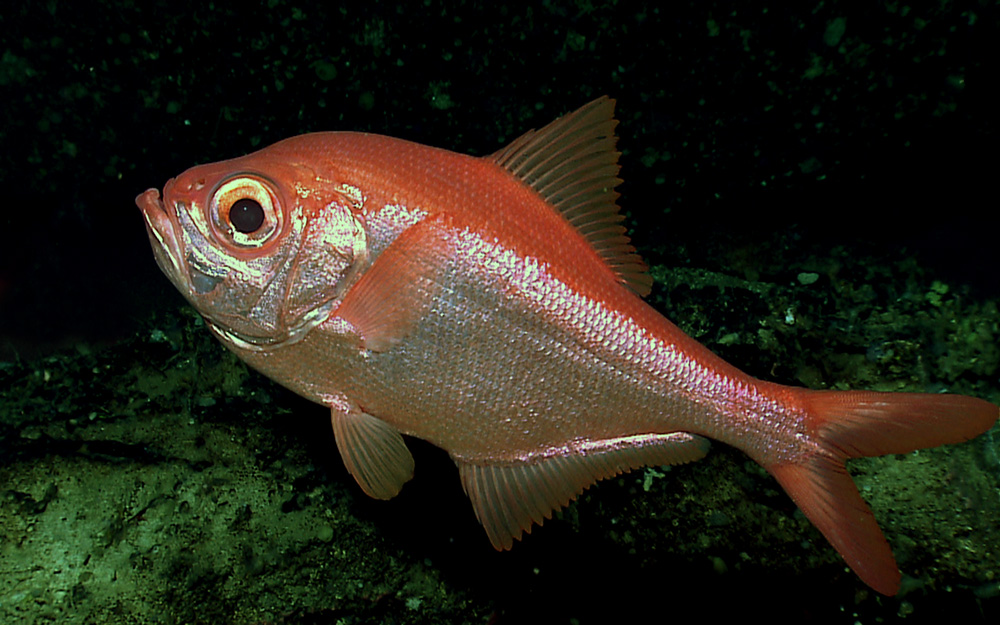Alfonsino
(Beryx decadactylus)

Classification
General data
The alfonsino (Beryx decadactylus), also known as the alfonsin, longfinned beryx, red bream, or imperador, is a species of deepwater berycid fish of the order Beryciformes.
It can be found in temperate and subtropical ocean waters nearly worldwide, though it is uncommon. It is typically associated with deep-sea corals, and schools are known to form over seamounts.
Adults are demersal and search for prey along the ocean floor, primarily fish, cephalopods, and crustaceans. Like other members of its family, it is remarkably long-lived, with individuals reaching ages of up to 69 years, and possibly longer.
It can reach sizes of up to 1 m (3.3 ft) in length and 2.5 kg (5.5 lb) in weight and is targeted by commercial fisheries.
Its low reproductive rate and the time it takes for juveniles to mature make it vulnerable to expanding deep-sea fisheries, but it is listed as Least Concern by the International Union for Conservation of Nature (IUCN) due to its extensive range.
The alfonsino has large eyes and a deep, compressed body, 1.9–2.5 times its standard length at the greatest depth. It is a rose red color dorsally and orange ventrally. The rest of its body is silvery-pink, and the breast is yellow-white in color. Fins and the inside of the mouth are bright red. The anal fin is distinctly larger than in many fish species and its caudal fin is deeply forked. Its bright red color is a common adaptation to deepwater surroundings, where red is filtered out of the light spectrum.
The alfonsino is found worldwide in subtropical and temperate waters, with a latitudinal range extending from 70°N to 48°S. It is found from as far north as Greenland and Iceland south to Brazil in the western Atlantic and South Africa in the eastern Atlantic. In the Indo-Pacific it is found from South Africa east to Japan, Australia, and New Zealand. It has also been reported off the coasts of Argentina and Hawaii. It is likely more common in the western Pacific than records indicate due to lack of fishing in its depth range in the region.
With an extensive depth range 110–1,000 m (360–3,280 ft) below the surface, the alfonsino occurs in localized aggregations over deep-sea coral habitats on the continental shelf and continental slope. By day it stays in deeper water and vertically migrates to shallower waters at night. It is most commonly found 200–400 m (660–1,310 ft) deep in waters around 24 °C (75 °F) in temperature, however depth range varies by region. In the eastern Atlantic its depth range is 350–600 m (1,150–1,970 ft), while in the western Atlantic its depth range is 100–972 m (328–3,189 ft), common depth range 400–600 m (1,300–2,000 ft). Its depth range is largest in the Indo-Pacific, where it is found as deep as 1,000 m (3,300 ft) in the waters off of Australia, New Zealand, New Caledonia, La Reunion Island, Mauritius, Madagascar, Comoros, Seychelles, Korea, Japan, New Guinea, the Ryukyu Islands, and Hawaii.











